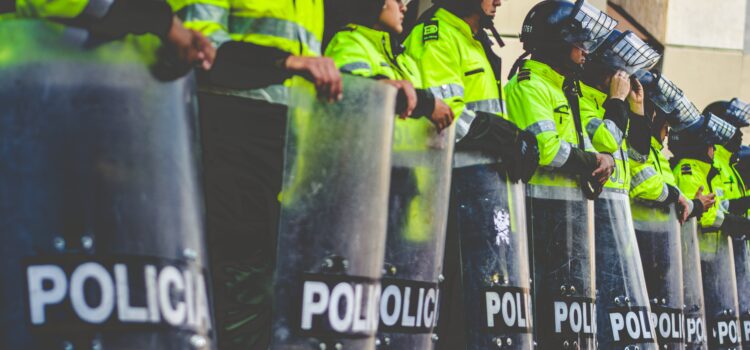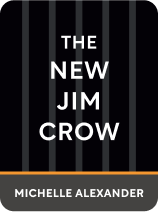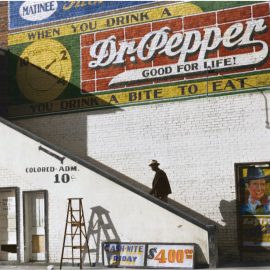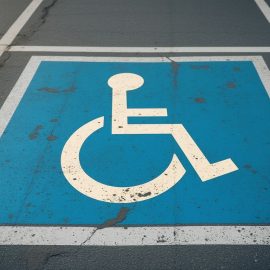

This article is an excerpt from the Shortform summary of "The New Jim Crow" by Michelle Alexander. Shortform has the world's best summaries of books you should be reading.
Like this article? Sign up for a free trial here .
What are the most important mass incarceration statistics? How do they demonstrate unequal treatment by race?
Mass incarceration statistics are indicative of racially biased treatment. Blacks make up a disproportionate part of the prison population, as seen in incarceration statistics by race.
Read on for mass incarceration statistics and their context.
Mass Incarceration Statistics
In 30 years, the US penal population increased from 300k to 2MM, with drug convictions accounting for the majority of increase. The US rate of incarceration is 750 per 100,000 people, vs 161 in the US in 1972 and 93 in Germany today.
Blacks make up 13% of the US population, but 40% of the US incarcerated population. A third of black men will have served time in prison, based on 2001 incarceration statistics by race.
Since 1980, the growth in number of arrests for black Americans has been concentrated in drug crimes – arrests for property and violent crimes have decreased. The incarceration statistics by race show this trend.
Drug offenses make up 46% of inmates in federal prisons and 16% in state prisons.
- Alexander argues these mass incarceration statistics underestimate the impact of drug laws – drug offenses receive half the sentence length as violent crime, so they flow out of prison more quickly. Drug crimes account for 31% of total federal and state prison admissions, but these have grown over time.
One might think racial differences in mass incarceration statistics are due to differences in crime rates, but within drug crime, this isn’t true. Blacks are no more likely than whites to sell and consume drugs (albeit according to survey data). Despite this, blacks are searched and arrested at higher rates and receive more severe punishment for the same crime.
System That Encourages Incarceration
The system becomes institutionalized and pervasive, as stakeholders pursue their own incentives and rationalize their behavior. This explains the mass incarceration statistics.
- In 1982, Reagan starts the War on Drugs, even though less than 2% of the American public view drugs as the most important issue. In 1989, this has risen to 64%.
- Crack cocaine reaches its height in 1985, ravaging urban neighborhoods affected by outsourcing of manufacturing jobs.
- Federal antidrug funding grows by a literal 10x in the FBI, DoD, and DEA over a decade, while funding for substance abuse counseling is cut.
- The DEA supports media campaigns for the crack epidemic. The media are happy to oblige since this is the “hottest combat reporting since the end of the Vietnam War.”
- Racially coded language about “crack whores” and “gangbangers” reinforce stereotypes of lazy welfare queens and black criminal predators.
- Politicians campaign on promises of being tough on crime and drugs, motivated by the desire to win and appealing to constituents.
- With the media rage, few politicians dare to stand against “cracking down on crime.” Instead, they scramble over each other to seem the harshest against crime. (This had also occurred during Jim Crow segregation, with some politicians proposing legislation against integrated chess playing.)
- With the Anti-Drug Abuse Act of 1986, mandatory minimum sentences are passed. Punishments are more severe for crack (associated with blacks), requiring 5g of possession, vs 500g of powder cocaine (associated with whites). More civil penalties are passed.
- George Bush Sr employs the famous Willie Horton ad with a black man who escaped on a work furlough and raped and murdered a white woman. He continues rhetoric of drug use as “the most pressing problem.”
- In response, Democrats want to take back voters.
- In 1992, Bill Clinton vows no Republican will be as tough on crime as he. He passes the “three strikes and you’re out” law, mobilizes $30 billion in anti-crime funding, eliminates welfare and federal public housing for drug felons, and increases funding for state prisons.
- Ironically Bill Clinton is famously popular among black voters, despite passing laws that will ultimately harm black communities and impacting mass incarceration statistics.
- Obama expands funding for anti-drug programs for economist stimulus and appoints staff members (Biden, Emanuel) who are tough on drugs.
- This could be political maneuvering for bigger personal goals, like Obamacare.
- Concerns about crime and drugs are weakly correlated with actual crime rates, and more strongly correlated with political campaigns.
- White voters are given a forum to express hostility to black progress without being accused of racism. Also, spurred by media sensationalism and political campaigns, fear drives support for tough policies.
- Once given a healthy dose of funding, prisons (public and private) and federal agencies (DEA, FBI) are reluctant to regress. They continue the lobbying and rhetoric to reinforce the feeling of danger.
- Judges and the Supreme Court uphold legality of police activities like pretext stops and barring evidence of discrimination from being considered in court (eg McCleskey v Kemp). These are likely primarily out of case precedent and not explicitly politically biased.
- But it’s hard not to think they were at least a little influenced by the zeitgeist of the day, the government mandate for war on crime.
- Lower courts then have to follow the case law and strike down attempts to claim discrimination in court.

———End of Preview———
Like what you just read? Read the rest of the world's best summary of Michelle Alexander's "The New Jim Crow" at Shortform .
Here's what you'll find in our full The New Jim Crow summary :
- How the US prison population increased 10x in 30 years because of harsh drug policies
- How being "tough on crime" was deeply motivated in discrimination against black people
- Why being convicted for a crime is essentially a life sentence of poverty and return to prison






